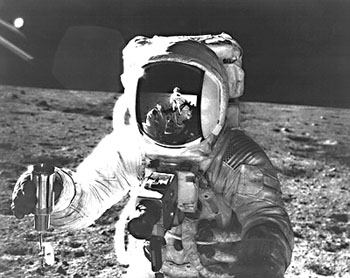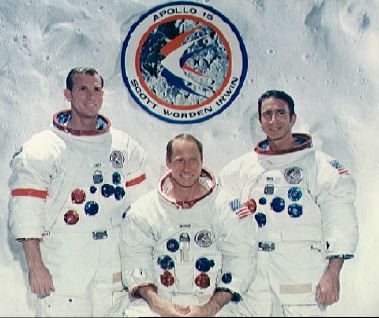The Apollo Crews
Apollo missions seven through seventeen each consisted of a crew of three astronauts. Their role fulfilled and actions taken defined the outcome of the program. The only casualties in the program came in the hands of a mission later named Apollo One. According to NASA, on January 27, 1967, tragedy struck the Apollo program when a flash fire occurred in command module 012 during a launch pad test of the Apollo/Saturn space vehicle being prepared for the first piloted flight, the AS-204 mission. Three astronauts, Lt. Col. Virgil I. Grissom, a veteran of Mercury and Gemini missions; Lt. Col. Edward H. White, the astronaut who had performed the first United States extravehicular activity during the Gemini program; and Roger B. Chaffee, an astronaut preparing for his first space flight, died in this tragic accident. Since that mission fluke, all missions have gone as planned except for Apollo Thirteen. The crew of Apollo Thirteen almost did not make it back. But thanks to their heroics, and the intelligence gathered and analyzed on Earth, America has not lost a man in space.



These are the official patches for each Apollo mission. Click on one to learn about its' crew and mission.
All patches are courtesy of NASA and the US Government.

Tragically, the crew of Apollo 1 died in a fire during a test run here on Earth. The three astronauts gave their lives to help the Apollo program, and in essence, died for their country. Their names were Virgil I. "Gus" Grissom, Edward H. White II, and Roger B. Chaffee

The Apollo 7 mission was eleven days and was designed to test the Apollo CSM in earth orbit. The mission was successful, except for the fact that all crew members developed head colds in outer space. This is what started the confinement of astronauts before launch. The spacecraft was launched on a Saturn IB launch vehicle.

The Apollo 8 mission was the first crewed launch of the Saturn V. The mission was practice for navigating towards the moon and back, and lasted 20 hours in space.

Apollo 9 was the first testing of the Apollo LM. It was nicknamed "The Spider" for its shape and appearance. The mission also tested the astronauts suits, which performed successfully.

This mission was to fully prepare for a lunar landing. The ship flew within 14km of the moon's surface. This was a dry run for every part of the mission except landing.

Apollo 11 landed on the moon. It was the first of such happenings for all of mankind. The astronauts walked the moons surface for over 2 hours, collecting samples and setting up equipment.

This was the second lunar landing, improving the intelligence of NASA. The astronauts walked for a longer time, as well as installing the first ever ALSEP nuclear-powered scientific station.

Apollo 13 was aborted after an oxygen tank exploded, making their ship nearly useless. The astronauts were forced to use the LM Aquarius to return to Earth. The LM served as a savior, and floated the men back to Earth. Jack Swigert is not pictured below. He was a last minute replacement to the crew.

Apollo 14 did not reach its' goal of exploring the rim of Cone crater. Alan Shepard commanded this mission, and in doing so became the first of the Mercury astronauts to fly to the moon.

Apollo 15 was the first extended stay on the moon by humans. It was also the first to bring a Lunar Rover with them to aid in traveling on the Moon. Numerous pieces of equipment were also left on the Moon to study orbiting.

Apollo 16 landed near the Descartes region in the lunar central highlands of the Moon. A lunar sample of 11kg was brought back, the largest of its kind.

Apollo 17 was the last mission to land on the Moon in the 20th century. It landed at the Taurus-Littrow landing site on the surface of the Moon. To date, it was the most successful moon mission.

-COPYRIGHT BRIAN PETOW 2004-
-ALL RIGHTS RESERVED-











